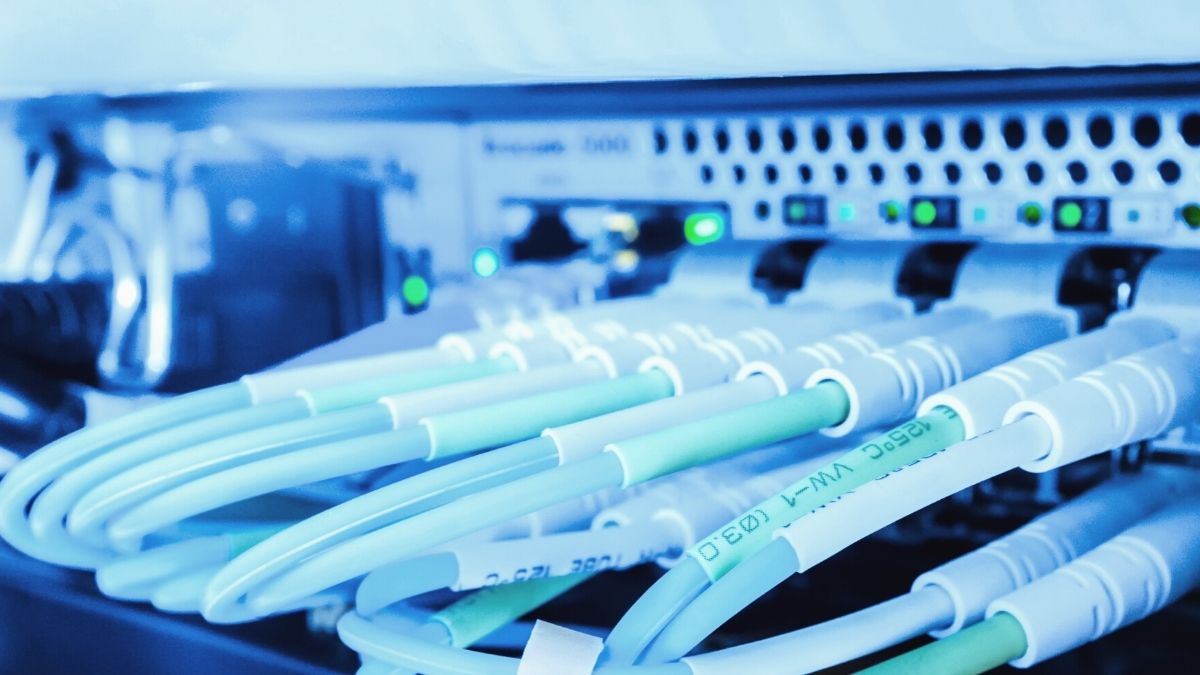Internet connection speeds and reliability are a very important factor in determining the success of a modern business. The rise in remote working has also meant that businesses are using more bandwidth than ever before, with data-intensive technologies like video calling and real time cloud backups now being used almost constantly.
Many businesses are upgrading their business broadband lines to fibre connections. The more office buildings that have fibre connections, the more widespread the fibre network becomes, making upgrades easier and less costly. If fibre is already available in your area, you should strongly consider making the switch.
In this article we’re going to cover a few of the benefits that a fibre connection could bring to your business and how the different varieties of fibre connections differ.
FTTP & FTTC connections – what is the difference?
The two most common fibre connections are FTTP and FTTC.
An FTTP connection stands for “fibre to the premises” and means that the entire connection – from the service provider to the nearest exchange cabinet, and then from the cabinet to your premises – is made using fibreoptic cable.
An FTTC connections stands for “fibre to the cabinet”. In these cases, the connection from the service provider to the local exchange cabinet is fibreoptic cable, and then the “last mile” of the connection from the cabinet to your premises are still made via a standard copper connection.
FTTP is faster than FTTC, although more costly to have installed if there is not an existing fibre connection already available at your premises.
How fast are FTTP and FTTC connections?
FTTC speeds start at around 30Mbps and can go as high as 80Mbps. FTTP speeds start at around 50Mbps and can go as high as 1,000Mbps (also known as 1Gbps).
Is FTTP the fastest connection possible?
For those businesses that need, and can afford, the absolute fastest lines with the highest levels of service, there is the option of a leased line. A leased line is a direct connection between your premises and the internet provider. It does not utilise shared public telecoms infrastructure elements like exchange boxes. As a leased line is a direct connection, the speeds are extremely high.
On ADSL, FTTC, and FTTP connections, you are sharing the line with other users. This can cause slowdowns during busy periods. Leased lines are exclusively leased to you, and only you, meaning the connection is not affected by other users. In technical terms we say that the line is uncontested”
A leased line is far beyond the requirements of most businesses, but certain industries which require extremely high speeds and extremely reliable connections, a leased line would be worth investing in.
High speed, low latency connections
Fibre connections allows you to access the cloud much faster than any other form of link. Because of fibre’s lower up/down ratio, your upload speed is much closer to your download speed. This makes fibre connections a great choice for businesses, which often upload data far more frequently than home users. For instance, video calling, cloud backups, and CRMs are all technologies which require large amounts of data to be continually uploaded.
Simply put, glass is a more durable data conduit than copper, so fibre connections are much less likely to fail than copper connections. Data transmission over fibre is highly dependable. Many environmental factors that impact copper cable have no effect on glass. No electric current will pass through the centre because it is made of glass, which is inert. It is resistant to electromagnetic and RF interference, so unlike copper connections, you don’t have to be concerned about running fibre cable next to industrial equipment. Fibre is therefore more resistant to temperature changes than copper, and it can even be run under water.
Are fibre connections more expensive?
Fibre cable itself and its installation have all gradually decreased in price over time. Fibre cable is still more costly in the short term than copper cable, but it could be less costly in the long run. This is because fibre has a lower maintenance requirement, less downtime, and needs less networking hardware.
These costs are paid for by the provider, but as they have reduced, many providers have passed those cost savings on to their customers.
How secure is a fibre connection?
Unlike copper connections which can be tapped, fibre cable keeps your data secure. It does not emit any signals external and as such it is almost impossible to intercept without very advanced technologies.
How can I get a fibre connection?
If you’re interested in getting a fibre connection set up, speak to Carden Telecoms’ team today. We can help you to find out which business broadband fibre connections are available in your area, work with you to determine which is the best option for your business, help you organise the installation of your new line and get you a great price on your internet bill.

